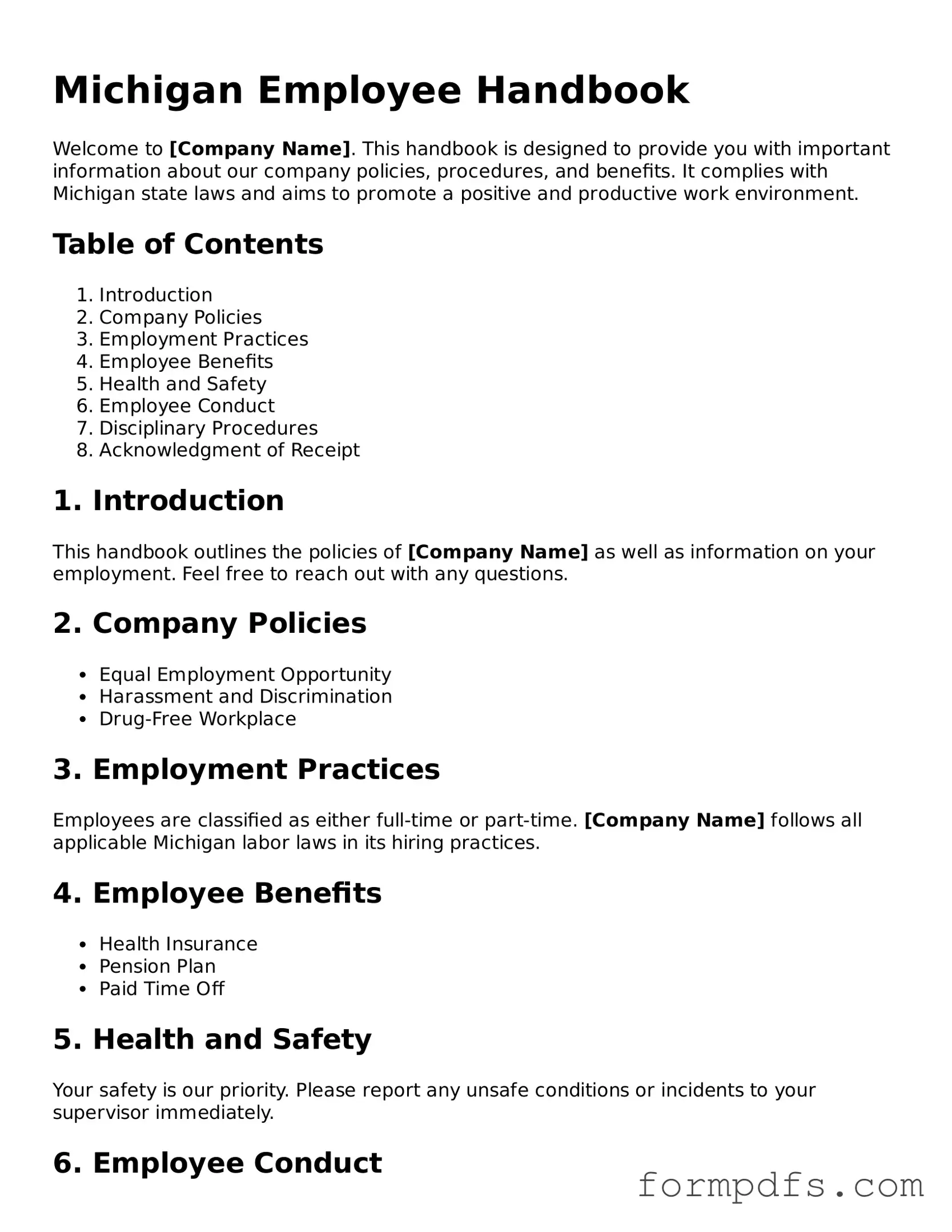What is the Michigan Employee Handbook form?
The Michigan Employee Handbook form is a document that outlines the policies, procedures, and expectations for employees within a Michigan-based organization. It serves as a guide for both employees and employers, ensuring that everyone is aware of their rights, responsibilities, and the workplace environment. This handbook can cover various topics, including attendance policies, code of conduct, benefits, and disciplinary procedures.
Who should have access to the Employee Handbook?
All employees should have access to the Employee Handbook. It is important for new hires to receive a copy during their onboarding process. Current employees should also have the opportunity to review the handbook periodically, especially when updates are made. Employers may choose to distribute the handbook in print or digital format, ensuring that all employees can easily refer to it as needed.
How often should the Employee Handbook be updated?
The Employee Handbook should be reviewed and updated regularly, ideally at least once a year. Changes in laws, company policies, or workplace culture may necessitate updates. Employers should also consider revising the handbook when significant events occur, such as changes in management or organizational structure. Keeping the handbook current helps maintain compliance and clarity for all employees.
What should be included in the Employee Handbook?
An effective Employee Handbook should include essential topics such as company history, mission and values, employment policies, benefits information, workplace safety procedures, and grievance procedures. It may also address topics like anti-discrimination policies, harassment prevention, and leave policies. Each section should be clear and concise, making it easy for employees to understand their rights and obligations.
Is it necessary to have employees sign an acknowledgment of the Employee Handbook?
Yes, it is advisable to have employees sign an acknowledgment form indicating they have received and understood the Employee Handbook. This serves as documentation that employees are aware of the policies and procedures outlined in the handbook. It can also protect the employer in case of disputes related to policy violations or misunderstandings about workplace expectations.
